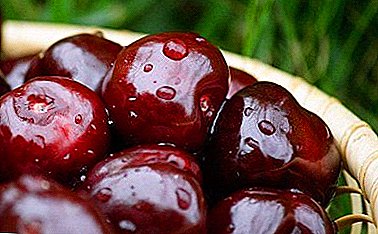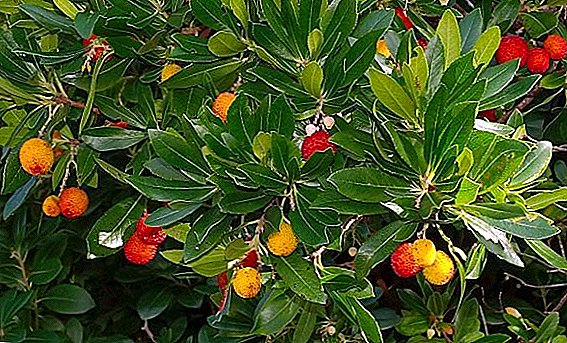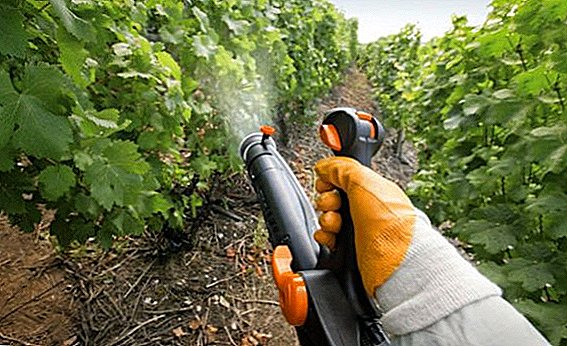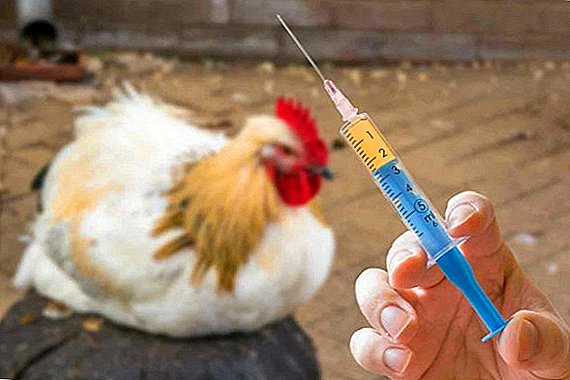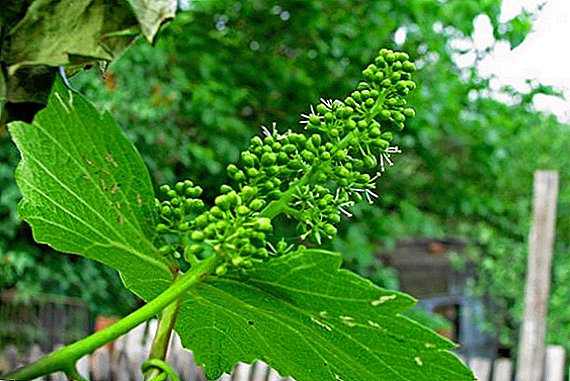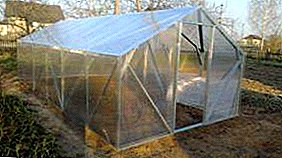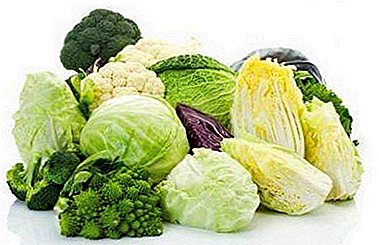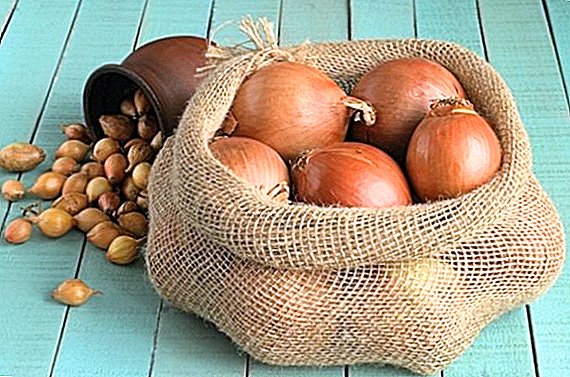 Onions are used in the preparation of many dishes of our cuisine, and it can be called one of the most cultivated crops in the garden. Preference is given to those varieties that are distinguished by yield, unpretentious care and pleasant taste. Such species include onion varieties "Hercules".
Onions are used in the preparation of many dishes of our cuisine, and it can be called one of the most cultivated crops in the garden. Preference is given to those varieties that are distinguished by yield, unpretentious care and pleasant taste. Such species include onion varieties "Hercules".
Variety description
Mid-season ripening hybrid variety Hercules is the fruit of the work of Dutch breeders. The two-year culture forms a small number of arrows, each 35 cm tall and a large onion, of circular shape with a flat bottom, several thin, but dense dry golden-brown wrappers.
Due to the long work of scientists, the culture differs from other varieties by many characteristics:
- high yields;
- long shelf life;
- excellent plant immunity against diseases;
- drought tolerance;
- the minimum number of arrows (positive effect on the size of the bulb);
- pleasant taste.
Learn more about the beneficial properties of onions.
The downside of hybrid culture is its two-year growing cycle. This means that the seeds will not yield in the first year. First, seedlings will grow from seed, and in the second year a full harvest.  In addition, commercially available onion seeds of this class are more expensive than other representatives, but Hercules justifies its higher cost.
In addition, commercially available onion seeds of this class are more expensive than other representatives, but Hercules justifies its higher cost.
Did you know? Yale University stores clay tablets of ancient Mesopotamia, which are a kind of culinary recipes. Onions as one of the ingredients mentioned onions.
Characteristics of onions and yield
The maturation of the culture occurs within 70-80 days after planting. From an area of one square meter, up to eight kilograms of crop are harvested. Ripe onion weighs up to 160 grams. The pulp is saturated with juice, white, all the layers of the internal scales fit tightly to each other.
Taste of onion with sharpness, but without much bitterness. Raw onions differ little in taste from cooked and processed thermally, there is a pleasant aftertaste. 
Selection of planting material
Seedlings suitable for cultivation in sizes up to two and a half centimeters in diameter, dense structure, uniform color, without spots and damage.
When choosing seeds in the store, pay attention to the shelf life. Its expiration in the current year means that the germination rate of this material is not high (maximum 30%).
Check out the description and nuances of growing onion varieties such as "Exhibicin", "Setton", "Centurion" and "Sturon".
Growing conditions
Sevok planted in the spring when the air temperature is +10 degrees, and before winter, selecting the smallest specimens. Planting should be lit, fruit trees, bushes or hedge should not obscure the landing.  The place is chosen either flat, or located on a hill (so as not to accumulate water). The proximity of groundwater is also not desirable (at least one and a half meters from the surface).
The place is chosen either flat, or located on a hill (so as not to accumulate water). The proximity of groundwater is also not desirable (at least one and a half meters from the surface).
Soil and fertilizer
The plot for planting is prepared in advance: they dig up, making fertilizers depending on the composition of the soil, cleaned of plant residues and weeds. It is recommended to make sure of a weakly acid or neutral soil reaction. On acid soils, the plant will feel worse.
We recommend to read about what types of soil exist, how to independently determine the acidity of the soil at the site, as well as how to deoxidize the soil.
To increase the fertility of the soil it is saturated with nutrient mixtures:
- for loam - humus (4 kg), peat (5 kg), superphosphate (15 g), urea (5 g);
- for the sandstone - a bucket of peat and humus, two buckets of clay soil, 15 grams of urea and superphosphate.

When choosing a landing site should take into account the predecessors of culture.
Important! On heavy clay soils culture does not grow, the best options are sandy or loamy land.
It is not advisable to plant after these crops:
- legumes;
- radish, turnip;
- dill;
- parsnip;
- sunflower;
- carrot;
- corn.
Growing from seed to seedlings at home
Sevok for growing onions can be grown from seeds. This is a more complicated process than buying ready-made seedlings, and it has its own technological features. 
Seed preparation
If the seeds were purchased in a specialized store, they do not need to be processed before planting: they have already gone through the process of sorting and processing.
Did you know? Herodot, who visited the pyramid of Cheops in Egypt, wrote about the inscriptions-calculations of the costs of food for builders on the walls of the pyramid. On these food lists was onions.
Seeds, bought from hands or taken from a friend, must first be dipped in a solution of potassium permanganate for half an hour, then soaked for a day in warm water. Remove the spilled seeds - they will not germinate. For the best germination in water add "Epin".
Video: onion seed preparation
Capacity and soil
You can grow in the purchased finished soil for vegetable seedlings. When self-cooking soil mixture takes garden soil and humus in equal parts, adding a glass of wood ash. For germination fit a rectangular container.
Seed planting process
Sowing is carried out at the end of March. Furrows form on the soil surface, leaving a distance of three centimeters between them. In the furrow, pre-moistened, with an interval of one centimeter put on the grain. Sprinkled with soil and moistened with a spray bottle.
The container is covered with a film or glass, put in a warm place (at least +20 degrees), with diffused light. As soon as the shoots hatch, they are moved to the light and lower the temperature of the content to +17 degrees.
Video: Sowing Onion Seeds for Seedlings
Seedling care
Seedlings need lighting at least 12 hours a day, so it is important to provide artificial lighting. Sprouting watered moderately, the soil should have time to dry before the next watering. When the seedlings grow, they are thinned, removing weak shoots.
Carry out a stern with mineral structures (potash-phosphoric) for seedlings. Closer to May, onions begin to harden: the first days are left for an hour on a heated balcony or veranda, gradually increasing the time to a day.
Transplanting seedlings to ground
In May, a site prepared in advance was dredged into the grooves twice deeper than the height of the bulb. Landing is carried out in the evening when it is not so hot and the sun is not aggressive. Before planting, trim the green part and the roots of a third of their length. 
Between seedlings observe a distance of 15 centimeters. For the convenience of care for the site between the rows leave a distance of up to 30 centimeters. After planting, seedlings are watered.
Cultivation from sevka in open ground
Variety "Hercules" can be grown in the greenhouse, but preferably open ground. Culture needs a lot of light, a moderate amount of moisture, and in a greenhouse these conditions can be violated.
Seed preparation
A few days before planting, sevok is sorted out, discarding soft, too large or damaged specimens. Some days they are dried in the sun, occasionally turning in different directions.
Read more about what you need to soak the bow before planting.
This is followed by preventive treatment of pests and diseases with the help of nitrophosphate solution. After a fifteen minute soaking, the onions are dried, treated with blue vitriol, dried again and prepared for planting. 
The process of planting sevka in the ground
As mentioned above, the plot for planting is prepared in advance, leveled, cleaned and saturated with fertilizers. Landing dates vary by region (from April to May). The main condition is constant air temperature not lower than +10 degrees Celsius.
The grooves for planting should be about five centimeters deep, the distance between them is up to thirty centimeters. Sevok from each other have at a distance of up to fifteen centimeters. After planting, watered and covered with sawdust mulch.
Watering
"Hercules" is watered up to two times a week by irrigation, in the absence of precipitation. If precipitation is regular, watering is carried out as the soil dries. Here you need to ensure that no crust forms on the surface of the earth.  Water should be soft, better collected than rainwater, not tap. The process is carried out in the evening when the sun is not so active. In mid-July, watering stops.
Water should be soft, better collected than rainwater, not tap. The process is carried out in the evening when the sun is not so active. In mid-July, watering stops.
Soil loosening and weeding
After each irrigation, weeding is carried out, clearing the soil from weeds, loosening the soil, saturating it with oxygen. Given the fragility of the root processes, loosening is carried out at a shallow depth, while acting extremely carefully.
Top dressing
In the season, “Hercules” needs 3-4 supplements:
- with the appearance of the first greenery - nitric (20 g of urea, 200 g of chicken manure per 10 liters of water);
- then use mineral phosphate-potassium complexes.

Pests, diseases and prevention
Among the common diseases of onion crops are powdery mildew, peronosporosis, fusarium and gray rot. It is worth noting again that the hybrid "Hercules" is resistant to diseases. In addition, during planting, the material is processed (seeds, seedling), which gives additional protection.
If, however, foci of affection were noticed, spraying with Bordeaux mixture or such preparations as:
- "Quadris";
- "Bravo";
- "Switch".
Important! The treatment with fungicides is carried out in calm, dry weather, preferably in the evening.
Crop rotation will be a good preventive measure against diseases.  A variety of experienced gardeners is recommended to plant annually in the new site. You should also not overdo it with watering, deep root system allows the plant to do without moisture for a long time, and overflow will cause rotting of the roots.
A variety of experienced gardeners is recommended to plant annually in the new site. You should also not overdo it with watering, deep root system allows the plant to do without moisture for a long time, and overflow will cause rotting of the roots.
We advise you to read about how to deal with diseases and pests of onions.
Harvesting and storage
In late summer, for better aging, the above-ground part is bent to the ground, and at the top of the onions, the soil is pounded. In late August or early September (you can judge the ripeness by dry feathers) begin to harvest.
Peeling garden forks, gently remove the bulbs from the ground. Put in cooked baskets. Then the collected crop is scattered on a piece of cloth or burlap, and dried in a dry, ventilated area, occasionally turning over.  Store onions in dry rooms at a temperature not lower than +5 degrees Celsius and low humidity. In such conditions, it can lie until the end of spring.
Store onions in dry rooms at a temperature not lower than +5 degrees Celsius and low humidity. In such conditions, it can lie until the end of spring.
It will be useful for you to read how to properly store onions in the winter.
Possible problems and recommendations
Yellowing of the aerial parts can cause nutritional deficiencies or insect pests. To avoid such problems, it is necessary to process the planting material, select the predecessors correctly, and also fertilize the soil as needed.
When caring for a crop, it is necessary to water it moderately, then do not forget about weeding from weeds, which deprive the onions of moisture and nourishment. From pests, it is desirable to plant around the onion beds of plants that repel insects, for example, marigolds or tansy, wormwood.
Yellowed feathers may indicate a lack of nitrogen, which means that the plant needs to be fed. The bitterness of the bulb is due to lack of oxygen. Therefore, you need to regularly loosen the soil in the garden.  On the bitterness in taste may be affected by a lack of phosphorus or moisture, therefore, even a variety resistant to drought, should be watered. When fertilizing with phosphorus complexes, you can slightly increase the dosage specified in the instructions for the preparation.
On the bitterness in taste may be affected by a lack of phosphorus or moisture, therefore, even a variety resistant to drought, should be watered. When fertilizing with phosphorus complexes, you can slightly increase the dosage specified in the instructions for the preparation.
Reviews of the variety "Hercules" are the most positive: high yield, high weight and excellent taste of the bulbs, unpretentiousness in cultivation. To grow a good harvest by strength and inexperienced summer resident, the main thing is to follow the rules of planting and caring for the plant.
Reviews from the network

I liked this variety with my taste. Onions ripen on the 85th day of their development. Onion variety Hercules is fruitful. I received 8 pounds of large, selected bulbs from one meter of planting. On average, each bulb weighs about 130 grams. Under the yellow husk is white, juicy flesh. The taste of the vegetable is moderately spicy, I use it for salads, in cooking, I eat it in natural form.
Hercules bulbs grow quickly and mature at the same time. This variety produces abundant yields. Its bulbs can be stored until spring. They do not germinate and do not shoot. Special care bow does not require. I plant it in fertilized land, water it regularly. In the process of growing, I add diluted organic fertilizer to the roots of the bulbs, constantly loosening the soil around the plantings. By the fall I get a good harvest. Dry onions and store them in the basement. I bought the seeds of this onion in the store. In one pack was 5 grams of seeds and they cost 35 rubles.



